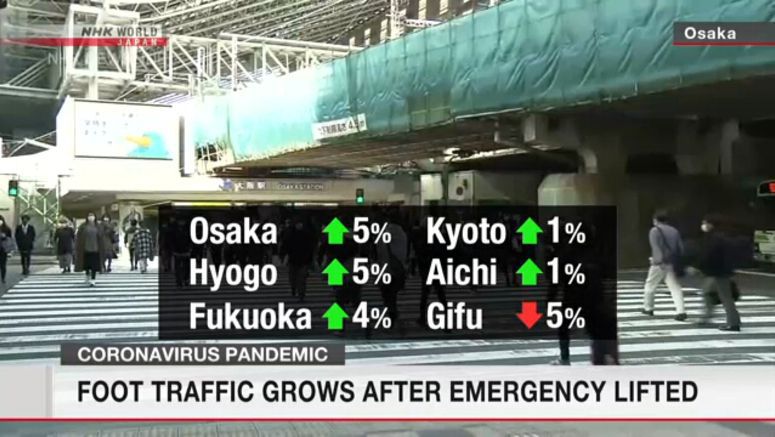Foot Traffic Grows After Virus Emergency Lifted

Mobile phone data show that foot traffic has slightly increased around some of the major railway stations in six Japanese prefectures where the second coronavirus state of emergency has been lifted.
NHK analyzed big data collected by telecom carrier NTT Docomo to see how many people were around the stations between 8 a.m. and 9 a.m. on Monday. The company collects data while protecting users' privacy.
The state of emergency imposed in January ended on Sunday in the prefectures of Osaka, Hyogo, Kyoto, Aichi, Gifu and Fukuoka.
Compared with the Monday average in January and February, foot traffic increased by 5 percent around Umeda Station in Osaka and Sannomiya Station in Hyogo.
People's movements grew 4 percent around Hakata Station in Fukuoka.
Pedestrian traffic was little changed around Kyoto Station, as well as Nagoya Station in Aichi, while crowds shrank by 5 percent around Gifu Station.
Compared with the Monday average between January and February of last year, when the spread of the virus was relatively limited, foot traffic fell by between 9 percent and 27 percent around these stations.